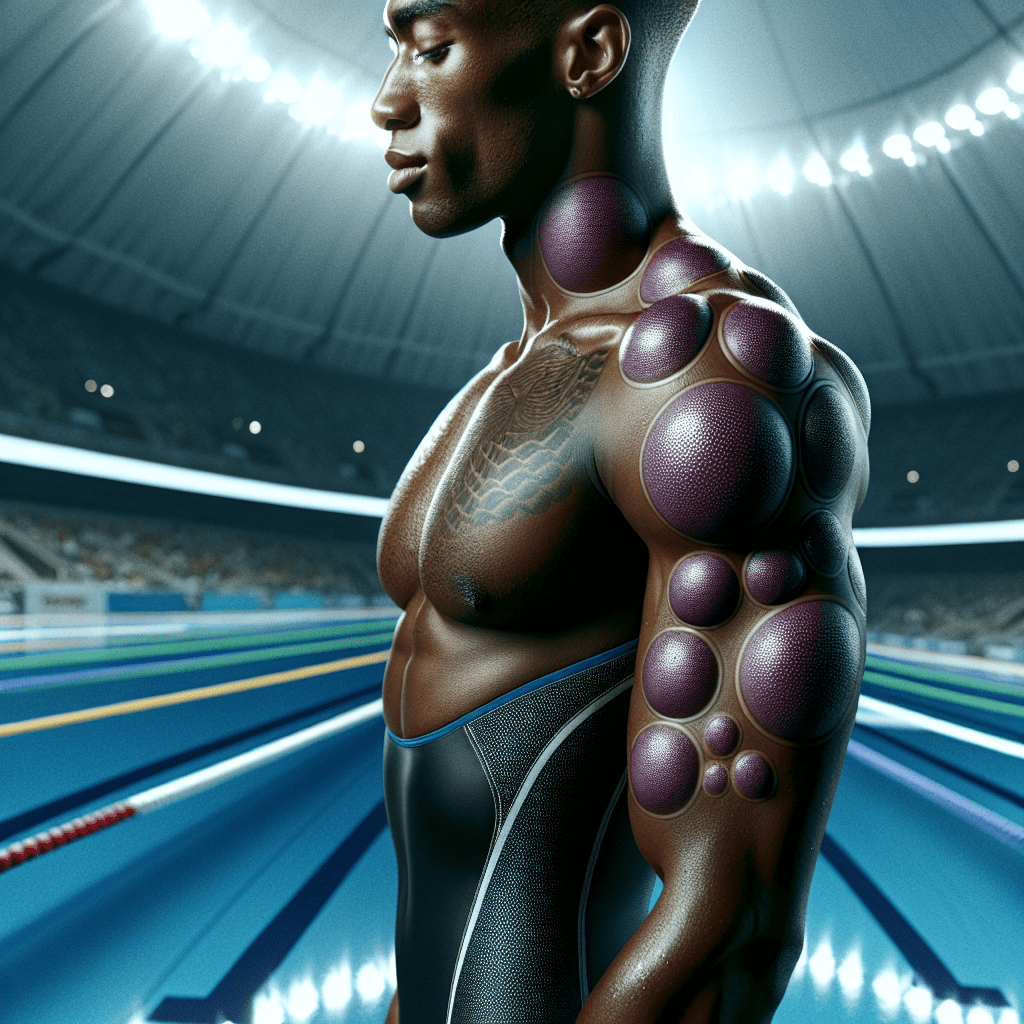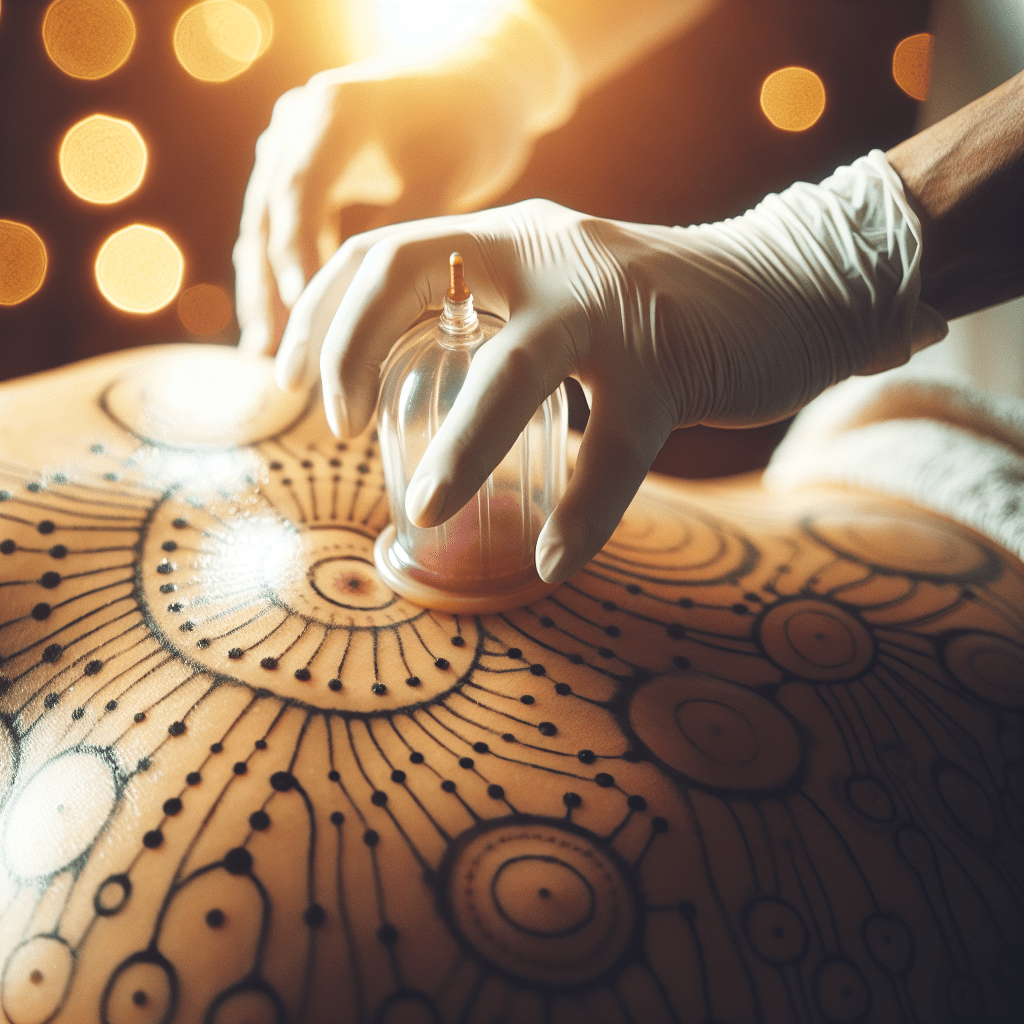Have you ever noticed those circular marks on Olympic swimmers or your favorite celebrities and wondered what they were all about? Those distinctive circles are the telltale signs of cupping therapy, an ancient healing practice that’s been making quite the modern comeback. But this isn’t just another wellness trend—it’s a time-tested technique that Eastern medicine practitioners have been using for thousands of years to enhance circulation and promote healing.
Cupping therapy involves placing special cups on the skin to create suction, which draws the skin and superficial muscle layer into the cup. This ancient practice comes in two main varieties: dry cupping, which simply involves the suction process, and wet cupping, which includes making small incisions in the skin before applying the cups to draw out small amounts of blood. Both methods have been integral parts of traditional Chinese medicine, Persian medicine, and other Eastern healing systems for centuries.
What’s fascinating is that while our ancestors relied on cupping without scientific validation, modern research is now beginning to confirm what Eastern healers have known all along—cupping offers real, measurable benefits for our health and wellbeing.
Science Confirms Cupping’s Pain-Relieving Powers
Recent scientific studies have been shedding light on what practitioners of Eastern medicine have claimed for generations: cupping therapy can be remarkably effective for managing various types of pain.
A comprehensive 2023 review of evidence found that cupping might provide significant relief for numerous musculoskeletal and sports-related conditions. Particularly noteworthy is its effectiveness for neck and back pain—issues that plague millions of people worldwide. One study showed that participants experienced a 66% reduction in headache severity following wet cupping compared to their baseline condition, highlighting the potential benefits of cupping for pain management.
The evidence doesn’t stop there. Clinical trials have demonstrated cupping’s effectiveness for knee pain, with many patients reporting substantial improvements in both pain levels and mobility after regular cupping sessions. For those suffering from the painful after-effects of herpes zoster (shingles), cupping has also shown promise in alleviating the associated neuralgia.
What’s particularly interesting is how both dry and wet cupping methods appear to offer pain relief, though in slightly different ways. A 2022 review found that wet cupping was especially effective for low back pain, while dry cupping showed more promise for neck pain and sports recovery. This suggests that different cupping techniques might be optimal for different conditions—something Eastern medicine practitioners have long understood through their holistic approach to treatment.
As one researcher noted, “This study indicates that cupping therapy may be efficient in alleviating pain intensity in patients with chronic musculoskeletal pain with immediate effects.” Such findings represent a significant validation of Eastern healing wisdom in the context of modern scientific inquiry.
How Does Cupping Work? Eastern Wisdom Meets Modern Science
The mechanisms behind the benefits of cupping have long been explained in Eastern medicine through concepts like “qi” (energy flow) and the balance of yin and yang. While these explanations might seem mystical to those accustomed to Western medical thinking, modern science is now proposing physiological explanations that align surprisingly well with these traditional views.
One of the primary mechanisms appears to be improved blood circulation. When the cup creates negative pressure on the skin, it causes capillary rupture and increases blood flow to the area. This enhanced circulation delivers more oxygen and nutrients to tissues while removing metabolic waste more efficiently—exactly what Eastern practitioners mean when they talk about “removing stagnation” and “promoting the flow of qi.”
A study by Cao, Li, and Liu provided evidence that cupping therapy significantly increased skin and muscle elasticity, suggesting enhanced fascial glide and tissue mobility. This aligns with the Eastern concept of removing blockages that impede the body’s natural functioning.
The pain-gate theory offers another explanation for cupping’s effectiveness. According to this model, cupping stimulates large nerve fibers, which then inhibit the transmission of pain signals to the brain. This creates a natural analgesic effect without medication—a perfect example of the body’s self-healing capabilities that Eastern medicine has always emphasized.
There’s also compelling evidence that cupping triggers an anti-inflammatory response in the body. The controlled tissue stress created by cupping appears to stimulate the immune system and reduce inflammation markers. This supports Eastern medicine’s view that many health problems stem from inflammation and imbalance, which cupping helps to correct.
As one researcher explained, “The mechanism of action behind cupping therapy involves an interplay of biological responses within the body. The negative pressure created by placing cups on the skin initiates a cascade of healing processes that work together to restore balance and promote wellbeing.” This description could easily have come from an ancient Eastern medical text, yet it represents cutting-edge scientific understanding.
The Current State of Cupping Research: Promising but Evolving
While the benefits of cupping are becoming increasingly recognized in scientific circles, it’s important to acknowledge that research in this area is still developing. Many studies show promising results, but some limitations in research methodology mean we need more robust, large-scale clinical trials to fully understand cupping’s potential across different health conditions.
A review published in 2022 included 11 trials with over 900 participants and found high-quality evidence showing significant pain improvement within 2–8 weeks of treatment. However, other studies have shown mixed results, particularly when it comes to long-term benefits.
The quality of research is improving, though. Recent studies are employing more rigorous methodologies, including randomized controlled trials with larger sample sizes and better controls. Some researchers are even using advanced imaging techniques like photoacoustic imaging to quantitatively assess the effects of cupping at different negative pressures, bringing modern precision to this ancient practice.
It’s worth noting that cupping therapy generally has a good safety profile. A comprehensive analysis found that the side effects of cupping were generally low to very low, with the most commonly reported adverse effects being mild and temporary, including local bruising and discomfort. This aligns with Eastern medicine’s emphasis on gentle, non-invasive treatments that work with the body rather than forcing change.
Before trying cupping therapy, it’s advisable to consult with healthcare professionals, especially if you have any underlying health conditions. While cupping has been used safely for centuries, it’s not appropriate for everyone, and finding a qualified practitioner is essential for ensuring both safety and effectiveness.
Eastern Wisdom Validated: The Future of Cupping in Integrative Health
As science continues to validate what Eastern medicine has known about the benefits of cupping, we’re witnessing a beautiful convergence of ancient wisdom and modern understanding. This integration represents the best of both worlds—the time-tested observations of Eastern healers combined with the precise measurements and explanations of Western science.
Cupping therapy stands as a perfect example of how traditional practices can complement modern healthcare. It offers a non-pharmaceutical approach to pain management and healing that many people find appealing in today’s world of over-medication. The visible marks left by cupping—once considered strange by Western standards—are now recognized as signs of a legitimate therapeutic process.
At HerbalsZen, we’re particularly excited by this convergence of Eastern and Western approaches to health. Just as cupping therapy represents ancient wisdom that’s finding validation in modern science, our EASTCHI AI system combines 2,000-year-old Eastern medical knowledge with cutting-edge artificial intelligence technology. We believe that the most effective health solutions often come from honoring traditional wisdom while embracing modern innovation.
The growing scientific support for cupping reflects a broader shift in healthcare toward more holistic, personalized approaches. Eastern medicine has always recognized that each person’s body is unique, requiring individualized treatment—a principle that’s increasingly being adopted in Western medicine as well. This personalized approach is exactly what our EASTCHI AI aims to provide through customized nutrition plans and lifestyle recommendations based on Eastern medical theories.
As one researcher aptly put it, “Traditional therapies like cupping have persisted for millennia not because of superstition, but because they offer real benefits that people experience firsthand. Our job as scientists isn’t to dismiss these practices but to understand how and why they work.” This humble approach to scientific inquiry echoes Eastern philosophy’s emphasis on observation, experience, and respect for time-tested wisdom.
The benefits of cupping therapy remind us that healing wisdom comes in many forms, and sometimes the most effective solutions have been right in front of us for thousands of years. Whether you’re drawn to cupping for pain relief, improved circulation, or enhanced athletic recovery, you’re participating in a healing tradition that bridges ancient knowledge and modern understanding.
As we move forward, the integration of practices like cupping into mainstream healthcare represents an exciting evolution in how we approach wellness—one that honors both the wisdom of the past and the discoveries of the present. In this integration, we find not just effective healing techniques but a more complete understanding of the remarkable human body and its innate capacity for self-healing when given the right support.
The circular marks of cupping therapy may fade from the skin after a few days, but the impact of this ancient practice on modern healthcare is here to stay—a perfect example of how Eastern wisdom continues to enhance our understanding of health and healing in the 21st century.


